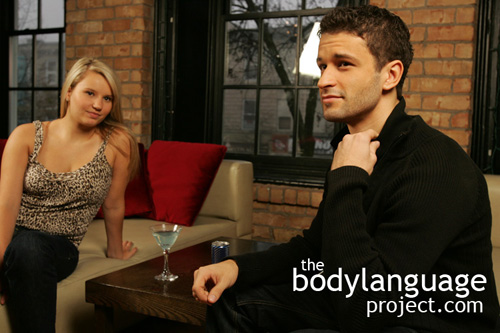In this third chapter we examined and compared the various influences on body language: genetic, learned and cultural. We found that in terms of genetics we all show similar roots and so display similarly across cultures, but that learning does play a role in how we might signal. We also covered emblems, illustrators, affect displays, adaptors and regulators which all form a part of what is called kinesics or how nonverbal behaviour relates to movement. Emblems, we found, are quotable gestures that are culturally specific which can be used as replacement for words and have a direct verbal translation. Illustrators are a second type of gesture that we use while speaking to help us paint a more descriptive picture such as talking about a boxing match and using a punching motion. Affect displays is nonverbal language that reveal our emotional state such as smiling or frowning and adaptors are movements or gestures that are used to manage our feelings or control our responses such as postural changes. Sometimes these adaptors have hidden meaning, but other times they do not, so caution is warranted. Regulators on the other hand control turn taking and flow when people speak with one another. Finally we covered high and low context cultures as it relates to touching and the ways various cultures meet and greet one another.
Tag Archive for Postural Changes
Adaptors
by Chris Site Author • March 5, 2013 • 0 Comments
Adaptors are movements or gestures that are used to manage our feelings or control our responses. Adaptors include movements done to improve comfort or reduce stress and often happen at such a low level they usually escape awareness. Adaptors include movements such as shifting in a chair or postural changes, crossing the legs, pulling at a shirt collar, adjusting a tie, loosening clothing and so forth.
What is interesting to researchers is that some adaptors serve a real purpose and others indicate stress. For example, sometimes our pants really are uncomfortable so we scratch our legs, other times the stress from outside pressure causes us to scratch in an effort to displace energy and distract us. Crossing the legs toward your date might be read as an indicator of interest, but might instead serve to alleviate numbness from loss of circulation. Children will rub their eyes repeatedly when tired, but this is not because they become itchy!
Scratching the nose is another example of an adaptor and could be misread as an indicator of a lying or might actually serve to relieve an itch. Another common adaptor used by adults is the head-grooming gesture where the hand messages the back of the neck or head to relive stress. This gesture is not an authentic gesture motivated by a physical purpose. Rather it used as a method to achieve comfort when facing discomfort applied from the outside. Just about every cue related to body language can be an adaptor. Arm crossing, leg crossing, scratching, fidgeting, twitching, rubbing the eyes, and so on, are all part of the human repertoire and not all have hidden meaning all of the time.
It is the job of the body language reader to decide which movements are motivated by a real physical purpose and which are motivated by an underlying emotional purpose. Usually stress release methods are person specific so once they are detected can be reliable as predictors in future encounters. Some might pull an ear lobe, rub one’s throat, pull on a collar or scratch the back of the hands. I will say that it’s usually pretty obvious when a gesture like scratching is real because it is targeted, quick, non-repetitive and provides instant relief, but when it’s as a response to emotional trauma, it show opposite characteristics. It is general in nature, perpetual, repetitive and provides no discernable relief (at least not instantaneously). The context, meaning high or low stress environment provides strong clues to the purpose of the adaptors. All proper body language reads should take context into consideration.
As we see, movements or adaptors come in two forms. They either have hidden meaning, or they do not. Plenty of emphasis has been given by researchers on these subconscious clues on the grounds that they would unlock secrets. However, the importance placed on adaptors is probably overstated and oversimplified. The real goal of the body language reader is to decipher the difference between adaptors with no meaning and movements and gestures that have actual meaning. Adaptors in cross-cultural meetings can also be potential landmines. For example, emblems, specifically because they are culturally engrained, are emitted without conscious thought. Many Arabic countries see the sole of the foot or the figure-four-leg cross as offensive and rude (an emblem of sorts to them) so they may classify a Westerner as something they intent not to be. It is clear to the Westerner that they wish only to take up a more comfortable seating position. The take-away message is to treat adaptors with the care they deserve instead of jumping to inaccurate, embarrassing or even disastrous conclusions.


